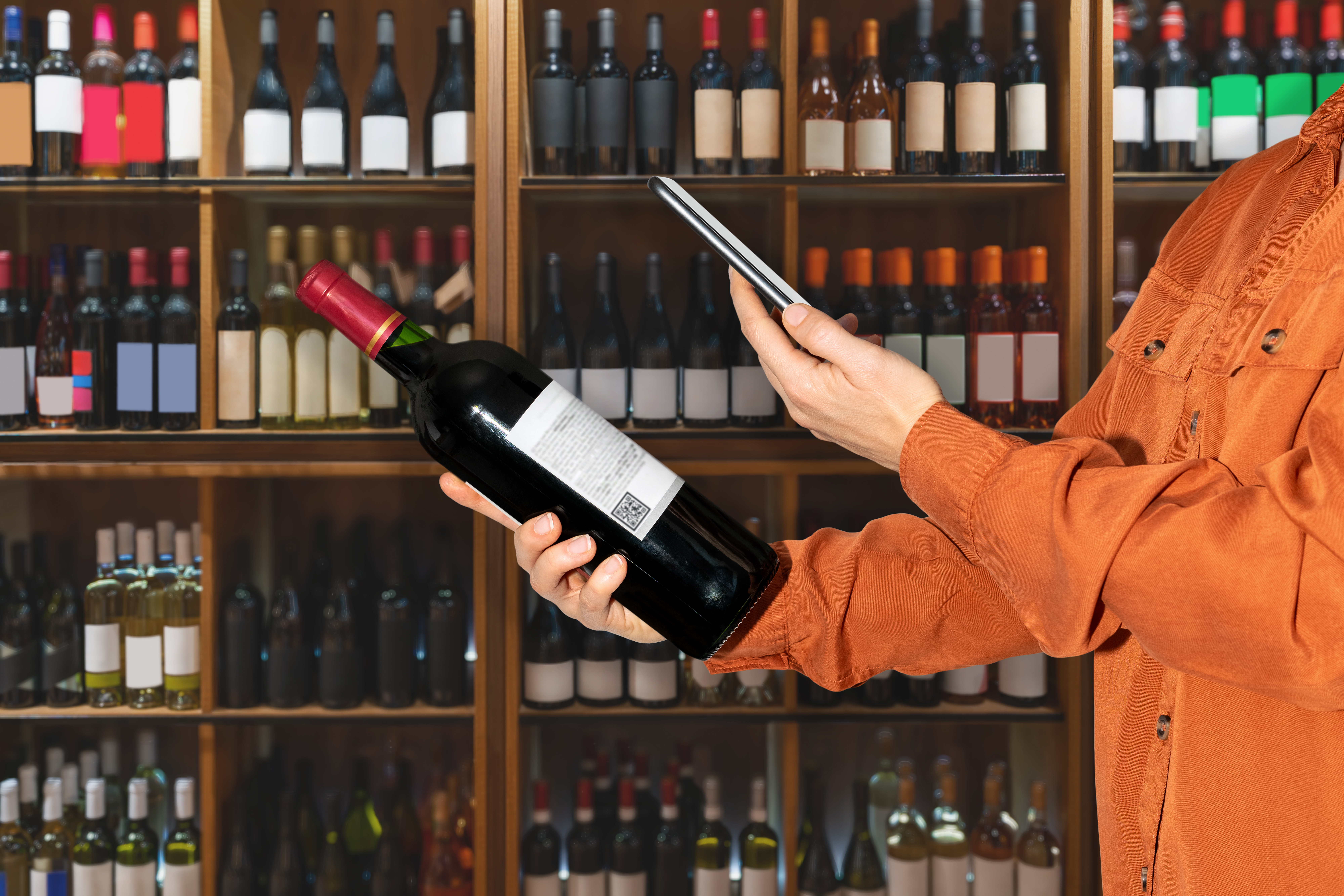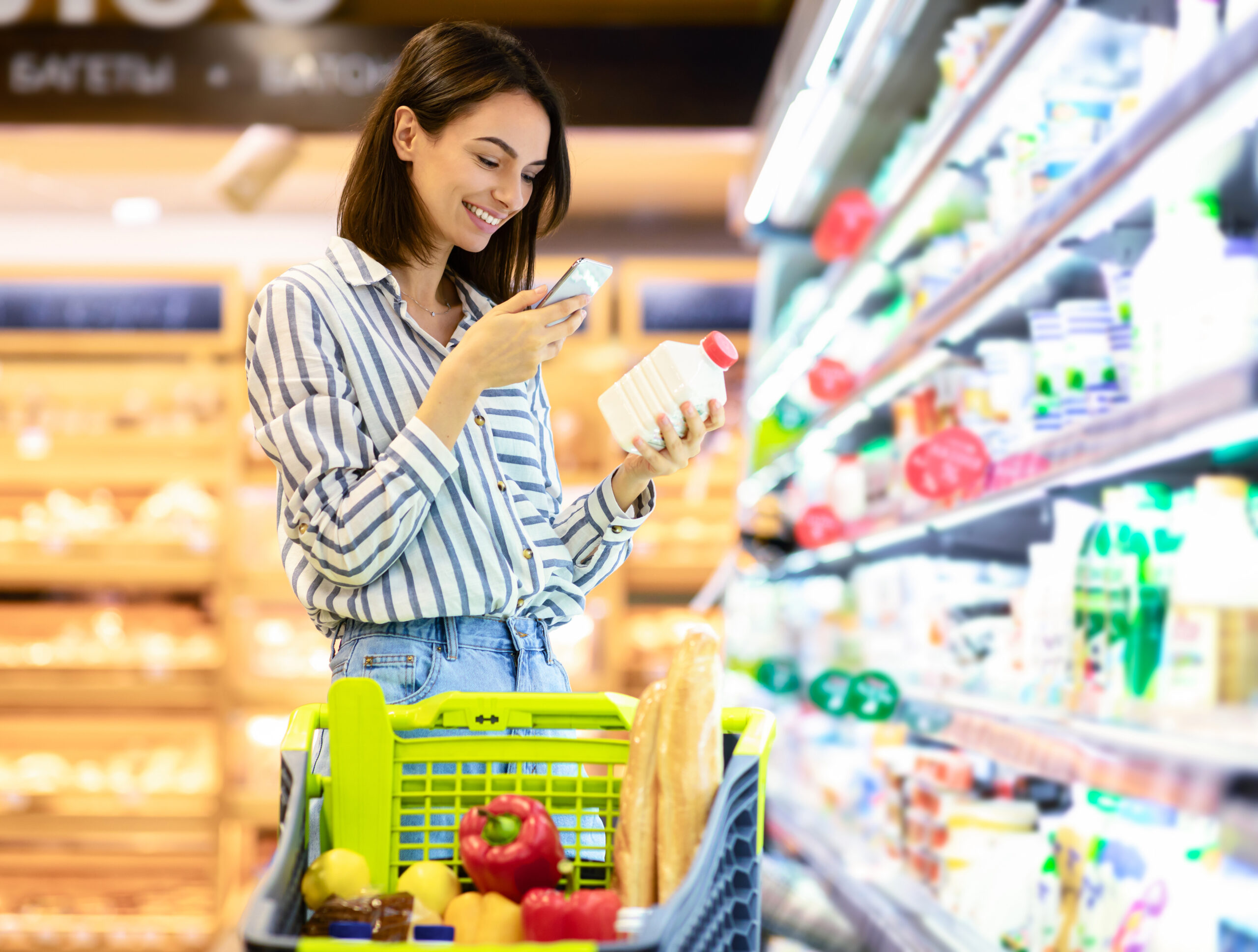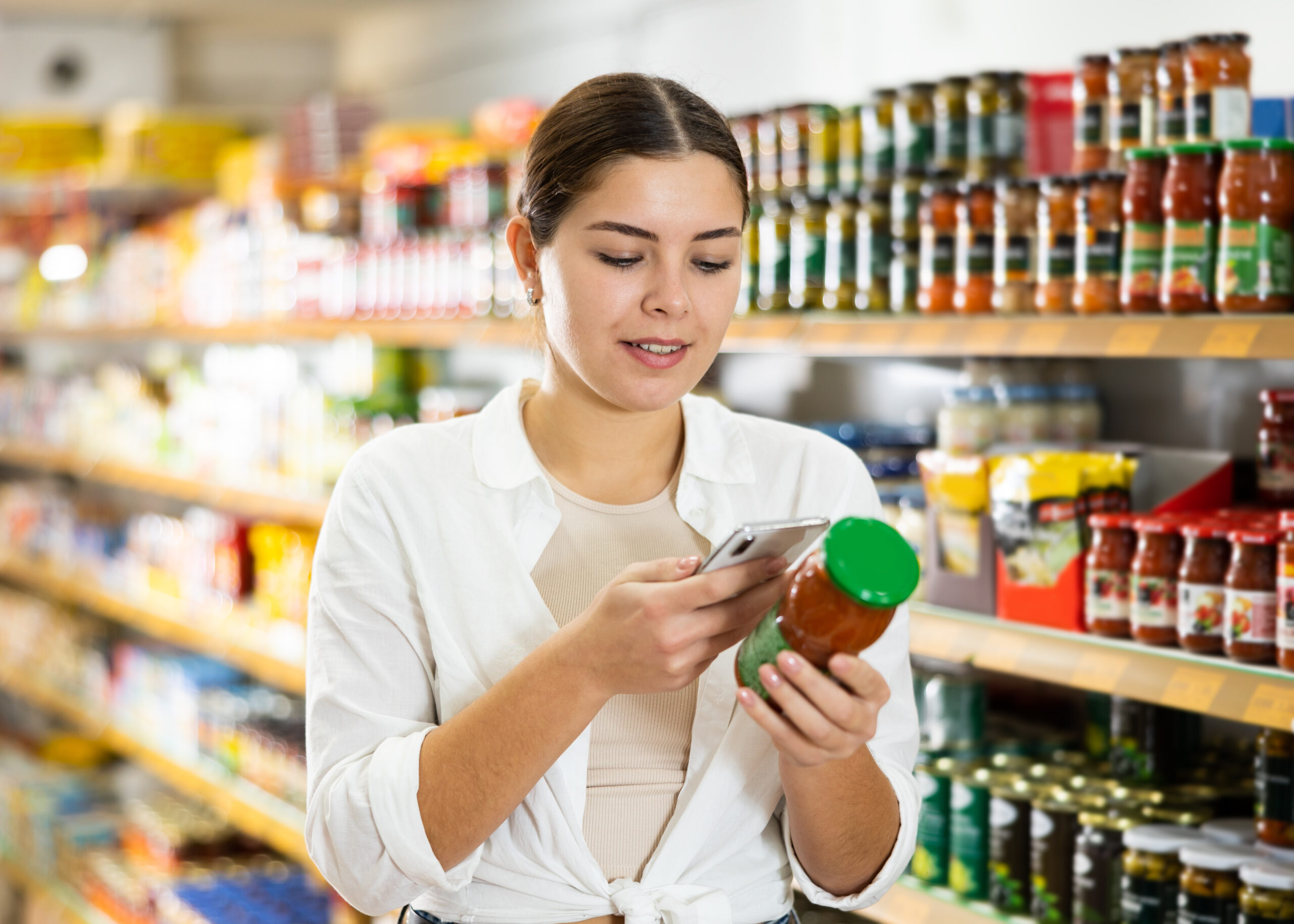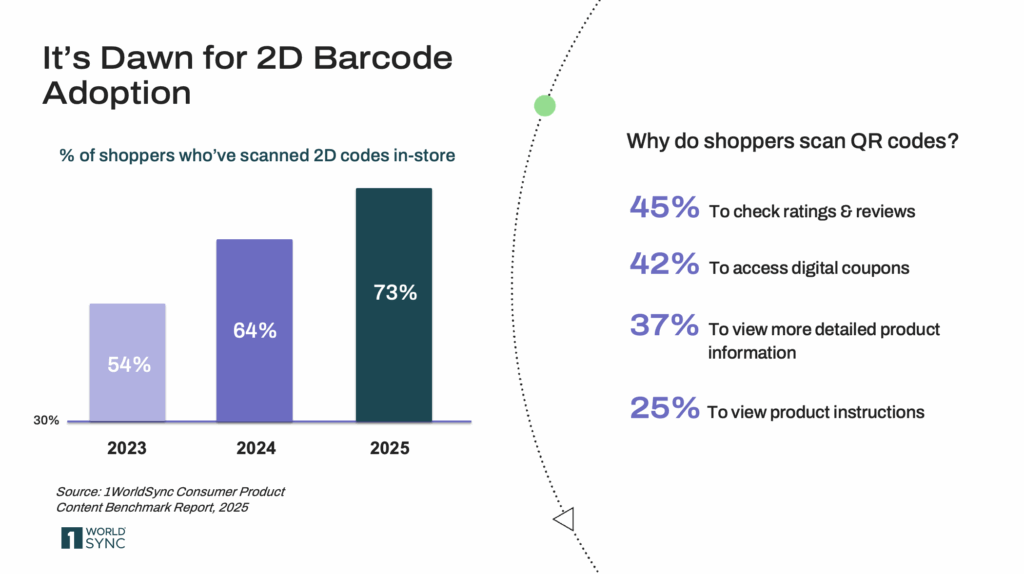Navigating the Transition to 2D Barcodes: A Practical Guide for CPG Brands
September 2, 2025
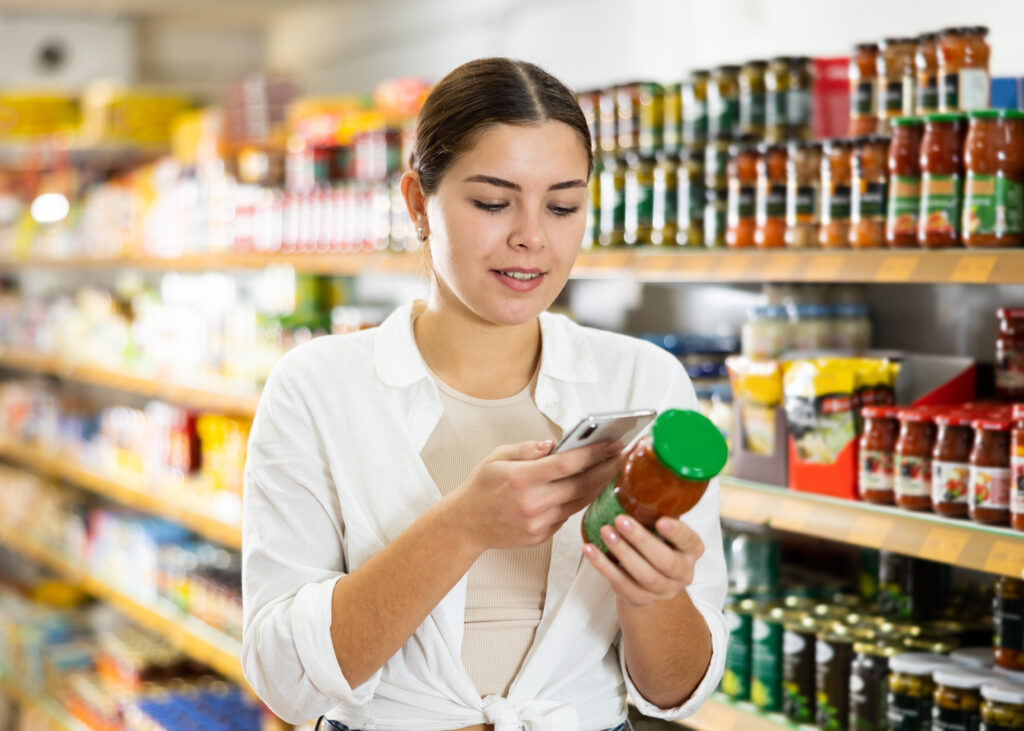
Regulatory changes and consumer expectations are driving significant shifts in CPG product packaging—particularly the adoption of 2D barcodes. With this in mind, understanding how to navigate the transition from Universal Product Codes (UPCs) to 2D barcodes is crucial for CPG brands, regardless of where or what they sell.
This practical guide offers a step-by-step transition plan to help you move from traditional UPC barcodes to advanced 2D barcodes, including best practices, common pitfalls (and how to avoid them), and success stories from industry leaders who have already taken the leap.
Short on time? Watch Link Manager expert and Product Manager Daniel Specker talk about the importance of 2D barcodes and how 1WorldSync is preparing users for the 2027 2D Barcode Sunrise.
Understanding the Value of 2D Barcodes
Today’s shopper demands access to product content: 75% of shoppers will switch to a brand that provides more in-depth product content beyond what’s required or provided on the physical label.
In 1WorldSync’s 2024 Product Content Benchmark report, 64% of shoppers have scanned a QR code on a product while shopping in store, a 10 point increase (54%) from the year before. And while the 2025 Product Content Benchmark report is still in the works, it’s worth noting that 73% of shoppers, a 19 point increase from 2023, stated that they have scanned a QR code while shopping in store.
2D barcodes go beyond the traditional UPC barcode, surpassing UPCs with the volume of information they can carry and communicate to the consumer. Information such as:
- Expiration dates
- Batch and lot numbers
- Relevant links
- Product details, including certifications, allergens, and sourcing
- High-quality imagery
- How-to or lifestyle use videos
Packing design and product information draw in shoppers and help them form an initial impression of the item and the brand. However, the addition of 2D barcodes further enhances your content strategy by maximizing the impact of consumer touchpoints with your product. QR codes virtually eliminate the content constraints of physical packaging, expanding what can be conveyed to the user with just one click. This new frontier of content disbursement allows brands to include any relevant information to engage consumers during in-store shopping as well as post-purchase.
In addition to the practical engagement and marketing benefits of these codes, GS1 is rolling out a 2027 2D barcode sunrise, and retailers must prepare. The time to transition to 2D barcodes is now.
Step-by-Step 2D Barcode Transition Plan
A successful 2D barcode roll-out is an organization-wide endeavor. All teams must be on the same page, working with the same information, timelines, and goals, to ensure a seamless transition. Below, we outline the steps for your organization to implement conversion-driving 2D barcodes that engage consumers, maximize your content, and increase conversions both in-store and out.
Step 1: Assemble the Right Internal Team
Shifting from UPCs to 2D barcodes doesn’t happen overnight, and it can’t happen unless the right team comes together to make it happen. As with any successful CPG product content rollout, transitioning to 2D barcodes requires cross-functional collaboration: your marketing, master data, supply chain, packaging, and legal teams must work together to see the project through.
Like any other major campaign, assign a project lead and create a timeline. Starting with the right internal team will set the foundation for a successful transition.
Step 2: Assess Your Current State
Before determining how to specifically improve and enhance your content strategy with QR codes, evaluate the current state of things. Take an inventory of current SKUs and packaging types. Review existing barcode and data management systems. Identify gaps in your current capabilities. Are your systems serving your brand?
1WorldSync provides CPG-specific product content solutions that ensure data accuracy, consistency, and transparency across all products and touchpoints, creating a seamless omnichannel content experience that helps you sell more. As the world’s largest data pool provider, our platform helps CPG retailers of all sizes optimize product content to increase conversions –– and retention. Reach out to our team to learn more.
Brands will see the best results with their 2D barcode transitions when they have the right platform, backing, and support for their present and future content needs.
Step 3: Understand the Technical Requirements
Your barcode content must meet GS1 standards, and their Sunrise 2027 initiative is driving the CPG industry toward the adoption of 2D barcodes.
These regulatory requirements are one reason why choosing the right product content management partner is so crucial. Work closely with your provider to ensure your barcodes meet all content standards so you aren’t penalized with fines or missing content.
Step 4: Update Your Product Information Management (PIM) Systems
Data quality and consistency are the cornerstone of a conversion-driving product content strategy. Consumers expect seamless content experiences everywhere they interact with your brand or products. CPG product content that is incomplete, outdated, or riddled with errors raises a red flag, prompting shoppers to turn to the competition. Employing the right product information management system for CPG retail needs helps ensure that all data is structured, up-to-date, and consistent.
Collaborating with a provider like 1WorldSync enables brands to implement PIM systems that optimize product content from creation to distribution, providing a comprehensive omnichannel content experience.
Step 5: Redesign the Packaging
Most CPG packaging will need a design refresh to accommodate the 2D code (Which makes getting ahead of the 2027 Sunrise all the more important!). Not only must your packaging include functional space for a code, but your design team must position it so that consumers will see it and scan it.
Designing a QR code that shoppers will scan is central to effective packaging redesign. Here are a few tips for code and packaging design that compel consumers to scan your 2D barcodes:
- Make it stand out from other elements with white space and contrasting colors
- Garner trust by including your logo in the code
- Place actionable text next to the code
Maintaining brand aesthetics and consistency must go hand-in-hand with scannability when transitioning to 2D barcodes.
Step 6: Pilot and Test the Codes
Once your content is dialed in, you’ve implemented a robust PIM system, and your packaging redesign is complete, it’s time to pilot and test your codes. Run a limited pilot with SKUs, retailers, or regions. Gather performance data and consumer feedback, then use that information to adjust your content as necessary.
Step 7: Scale the 2D Barcode Rollout
Finally, it’s time for the official rollout. As with any element of your business, scalability is essential for product content strategy.
As your brand grows, so does the complexity of managing product information. Your content management platform should evolve with your brand and its changing needs. Whether you’re expanding into new markets, adding new product lines, or entering different retail partnerships, your PIM system should adjust without missing a beat. 1WorldSync offers high-level scalability and flexibility, allowing you to update your content and 2D barcodes simultaneously with a single click.
Best Practices for a Successful 2D Barcode Transition
The guide above provides straightforward, step-by-step instructions for a successful transition to 2D barcodes. Implementing the following best practices helps the rollout go as smoothly and predictably as possible:
- Start early to avoid bottlenecks and to meet 2027 Sunrise deadlines. Give your teams plenty of time to on-ramp the barcode transition, accounting for potential hiccups during the process.
- Align with GS1 guidelines from day one. Working with a partner like 1WorldSync ensures compliance at every step so your content is always active and reaching consumers.
- Keep cross-functional teams informed and engaged so everyone is up to speed, on the same page, and working toward the same goals.
- Use clear KPIs to measure success. 1WorldSync’s Link Manager capabilities help users learn what links are performing well, where people are scanning from (region, device, software), and more.
Common QR Code Pitfalls to Avoid
Understanding where many companies fall short on 2D barcode adoption can help CPG brands avoid the common pitfalls associated with transitioning from traditional UPCs. Be aware of:
- Making assumptions about GS1 compliance. QR codes and the embedded content must adhere to these strict standards, or brands will face fines and penalties.
- Failing to test new codes. Testing 2D codes before a full-scale rollout ensures you get the code design, packaging design, and content right the first time.
- Creating information silos. Instant communication and data sharing are crucial for a successful, cost-effective, and time-efficient 2D barcode transition.
Industry Success Stories
The following are just a few of some of our favorite success stories of brands already using QR codes to engage consumers in creative, brand-building ways.
1. Vital Farms Pasture-Raised Eggs
Vital Farms goes beyond ethical food production by offering transparency directly on their egg cartons. The 2D barcode invites customers to scan and view a live stream of the pasture where the eggs originated. This real-time window into their ethical farming practices reinforces trust and aligns with their mission of providing humane and sustainable products.
La Colombe’s 2D barcodes are designed for customers who crave details. By scanning the code on a can of Draft Latte, consumers can access product information, including the coffee’s sourcing, brewing process and unique features.
With a 2D barcode that leads to the “Where Does Your Milk Come From” page, Organic Valley offers an interactive map and vlog series showcasing the farms behind their products. Customers can connect directly with the brand’s story and farming practices.
Choosing 1WorldSync for a Smooth 2D Barcode Transition
Adopting 2D barcodes across your CPG product lines is not only helpful in meeting consumer demand, introducing new products, and increasing conversions, but it will also become mandatory according to GS1 standards in 2027. 1WorldSync has the tools and support to help you make a seamless transition.
Our centralized PIM system and GS1-compliant data syndication ensure every product content detail is accounted for. With scalable solutions for brands of all sizes and the largest data pool out there, we have the tools and expertise you need for all your product content needs, 2D barcodes included.
Take the first step today to leverage the resources of 1WorldSync for your CPG product content needs. Contact our team to learn more.
Related Posts
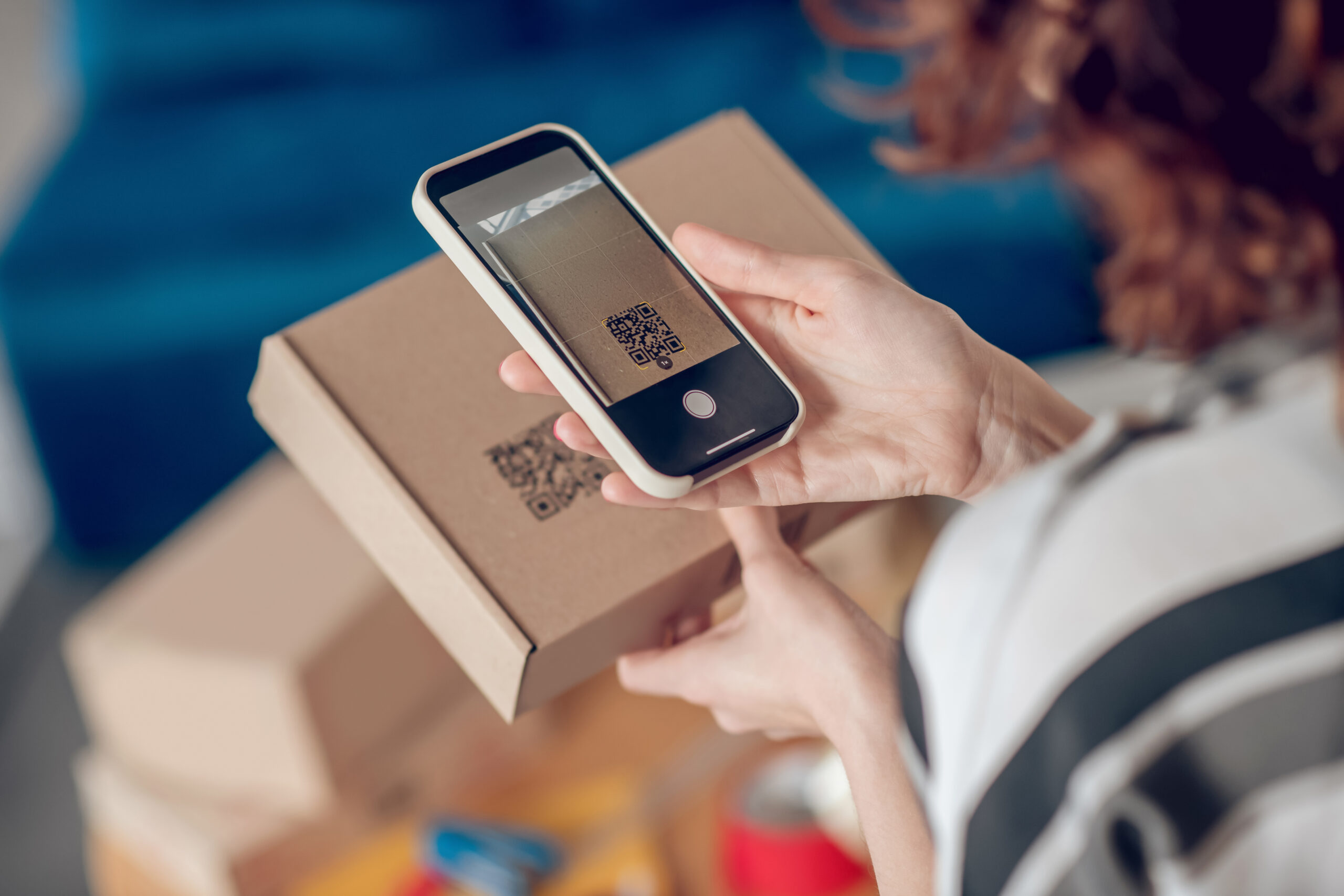
How Innovative Brands Are Using Unique Product Packaging 2D Barcodes to Tell Their Story
Read Article
